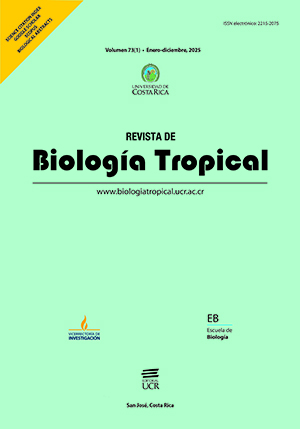Resumen
Introducción: La resina de laca, la única resina natural de origen animal, producida exclusivamente por el insecto laca (Kerria spp.) es no tóxica y se considera biodegradable. Sin embargo, hasta ahora, no se han explorado las bacterias que están involucradas en la biodegradación. Además, hasta la fecha no se ha estudiado el destino de las bacterias del suelo durante la biodegradación. Objetivo: Explorar el destino de las bacterias del suelo debido al entierro de resina de laca en el suelo para determinar si es seguro para el medio ambiente o no y explorar las posibilidades de identificar cualquier flora bacteriana involucrada en la biodegradación de laca. Métodos: El estudio se inició en 2016 enterrando muestras de resina de laca (producto de resina de laca semirrefinada) en el suelo a nivel de campo y en suelo de macetas, en réplicas. Las muestras de resina de laca se extrajeron del suelo en 2019 y el suelo adherido a las muestras de resina de laca se utilizó en experimentos posteriores. La diversidad bacteriana de estos suelos se documentó mediante la secuenciación de la región V3-V4 del ARNr 16S a través de la plataforma NGS Illumina. Resultados: No se obtuvo variación significativa en la diversidad bacteriana del suelo entre las muestras, excepto por el aumento marginal en el recuento de Actinobacterias, Myxococcales, Gemmatales, Gemmataceae, grupo WD2101-suelo en el suelo de maceta enterrada, y Proteobacterias y Acidobacterias en el suelo de campo. Se sabe que la mayoría de estos grupos bacterianos degradan polímeros orgánicos complejos. Conclusiones: Dado que no hay grandes cambios en la diversidad bacteriana del suelo debido al enterramiento de resina de laca, se puede concluir que la resina de laca no afecta la microflora y es segura para el suelo.
Citas
Aanderud, Z. T., Saurey, S., Ball, B. A., Wall, D. H., Barrett, J. E., Muscarella, M. E., Griffin, N. A., Virginia, R. A., Barberán, A., & Adams, B. J. (2018). Stoichiometric shifts in soil C: N: P promote bacterial taxa dominance, maintain biodiversity, and deconstruct community assemblages. Frontiers in Microbiology, 9, 1401. https://doi.org/10.3389/fmicb.2018.01401
Agarwal, S. C., Srivastava, B. C., & Majee, R. N. (1988). Improved method of isolating aleuritic acid for maximizing its recovery from lac. Research and Industry, 33, 243–248.
Anandan, R., Dharmadurai, D., & Manogaran, G. P. (2016). An introduction to Actinobacteria. In D. Dharumadurai, & J. Yi (Eds.), Actinobacteria-basics and biotechnological applications (pp. 3–37). Intech Open.
Anees, K. (2016). Biosynthesis of aleuritic acid in Indian lac insect, Kerria lacca and its in vitro production [Unpublished Doctoral Thesis]. Indian Institute of Technology, Delhi.
Anonymous. (1986). Final report on the safety assessment of shellac. Journal of the American College of Toxicology, 5(5), 309–327. https://doi.org/10.3109/10915818609141914
Butbunchu, N., & Pathom-Aree, W. (2019). Actinobacteria as promising candidate for polylactic acid type bioplastic degradation. Frontiers in Microbiology, 10, 2834. https://doi.org/10.3389/fmicb.2019.02834
Caporaso, J. G., Kuczynski, J., Stombaugh, J., Bittinger, K., Bushman, F. D., Costello, E. K., Fierer, N., Gonzales-Peña, A., Goodrich, J. K., Gordon, J. I., Huttley, G. A., Kelley, S. T., Knights, D., Koenig, J. E., Ley, R. E., Lozupone, C. A., McDonald, D., Muegge, B. D., Pirrung, M., … Knight, R. (2010). QIIME allows analysis of high-throughput community sequencing data. Nature Methods, 7(5), 335–336. https://doi.org/10.1038/nmeth.f.303
Dedysh, S. N. (2020). Gemmatales. In W. B. Whitman (Ed.), Bergey’s manual of systematics of archaea and bacteria (pp. VL193). Wiley. https://doi.org/10.1002/9781118960608.obm00177
Dedysh, S. N., & Ivanova, A. A. (2018). Planctomycetes in boreal and subarctic wetlands: diversity patterns and potential ecological functions. FEMS Microbiology Ecology, 95(2), fiy227.
Handelsman, J. (2004). Metagenomics: Application of genomics to uncultured microorganisms. Microbiology and Molecular Biology Reviews, 68(4), 669–685. https://doi.org/10.1128/mmbr.68.4.669-685.2004
Industry Research. (2025, February 14). Global shellac market size, share and industry analysis by regions, countries, types, and applications, forecast to 2028. https://www.industryresearch.biz/global-shellac-market-23706917
Kersters, K., De Vos, P., Gillis, M., Swings, J., Vandamme, P., & Stackebrandt, E. (2006). Introduction to the Proteobacteria. In M. Dworkin, S. Falkow, E. Rosenberg, K. H. Schleifer, & E. Stackebrandt (Eds.), The Prokaryotes (pp. 3–37). Springer.
Kielak, A. M., Barreto, C. C., Kowalchuk, G. A., van Veen, J. A., & Kuramae, E. E. (2016). The Ecology of Acidobacteria: Moving beyond Genes and Genomes. Frontiers in Microbiology, 7, 744. https://doi.org/10.3389/fmicb.2016.00744
Meyer-Cifuentes, I. E., Werner, J., Jehmlich, N., Will, S. E., Neumann-Schaal, M., & Öztürk, B. (2020). Synergistic biodegradation of aromatic-aliphatic copolyester plastic by a marine microbial consortium. Nature Communications, 11(1), 5790. https://doi.org/10.1038/s41467-020-19583-2
Seipke, R. F., Kaltenpoth, M., & Hutchings, M. I. (2012). Streptomyces symbionts: An emerging and widespread theme? FEMS Microbiology Reviews, 36(4), 862–876. http://dx.doi.org/10.1111/j.1574-6976.2011.00313.x
Sharma, K. K., Chowdhury, A. R., & Srivastava, S. (2020). Chemistry and applications of lac and its by-product. In D. Kumar, & M. Shahid (Eds.), Natural materials and products from insects: Chemistry and applications (pp. 21–37). Springer International Publishing.
Sharma, S. K., Shukla, S. K., & Vaid, D. N. (1983). Shellac-structure, characteristics and modification. Defence Science Journal, 33, 261–271. https://doi.org/10.14429/DSJ.33.6181
Siddiqui, S. A. (2004). Lac-The versatile natural resin. Natural Product Radiance, 3(5), 332–337.
Srivastava, S., & Thombare, N. (2017). Safety assessment of shellac as food additive through long term toxicity study. Trends in Biosciences, 10(2), 733–740.
Takahashi, S., Tomita, J., Nishioka, K., Hisada, T., & Nishijima, M. (2014). Development of a prokaryotic universal primer for simultaneous analysis of bacteria and archaea using next-generation sequencing, PLoS ONE, 9(8), e105592. https://doi.org/10.1371/journal.pone.0105592
Zhang, X., Chen, Q., & Han, X. (2013). Soil bacterial communities respond to mowing and nutrient addition in a steppe ecosystem. PLoS ONE, 8(12), e84210. https://doi.org/10.1371/journal.pone.0084210
##plugins.facebook.comentarios##

Esta obra está bajo una licencia internacional Creative Commons Atribución 4.0.
Derechos de autor 2025 Revista de Biología Tropical







